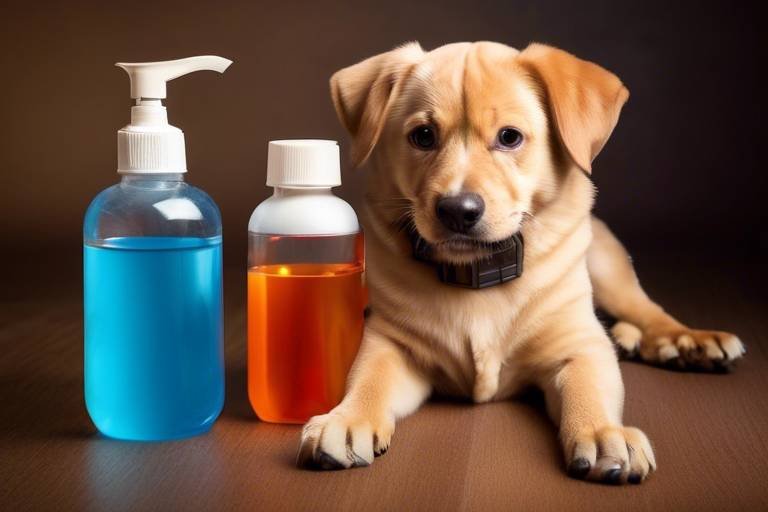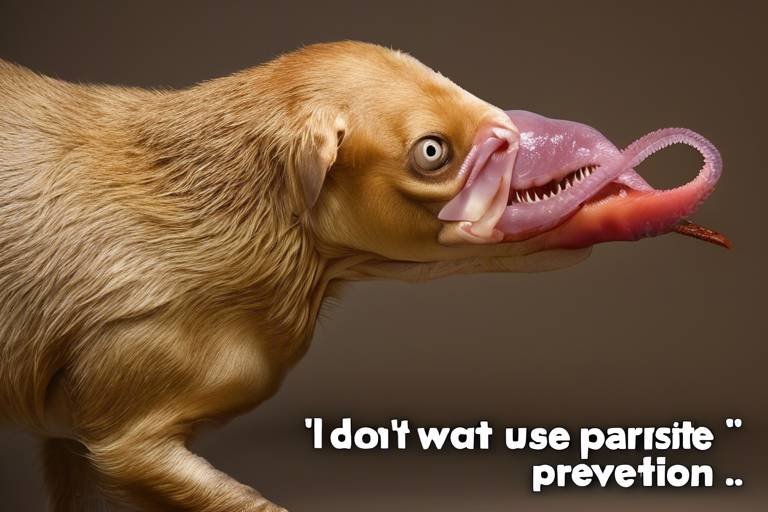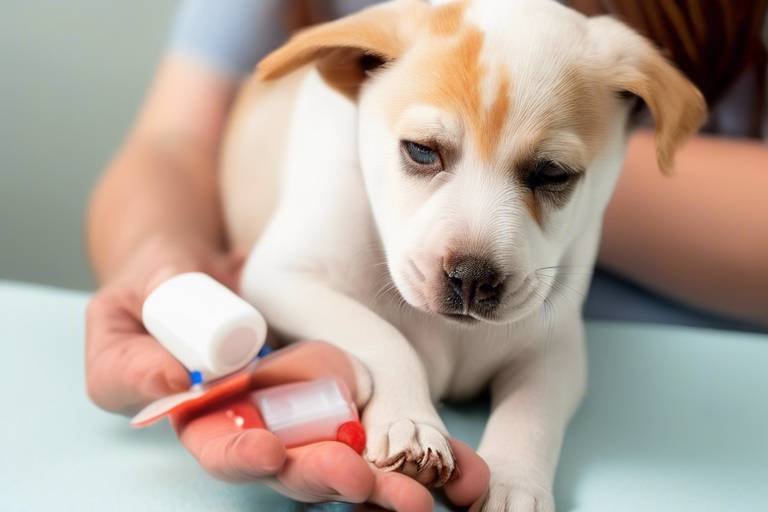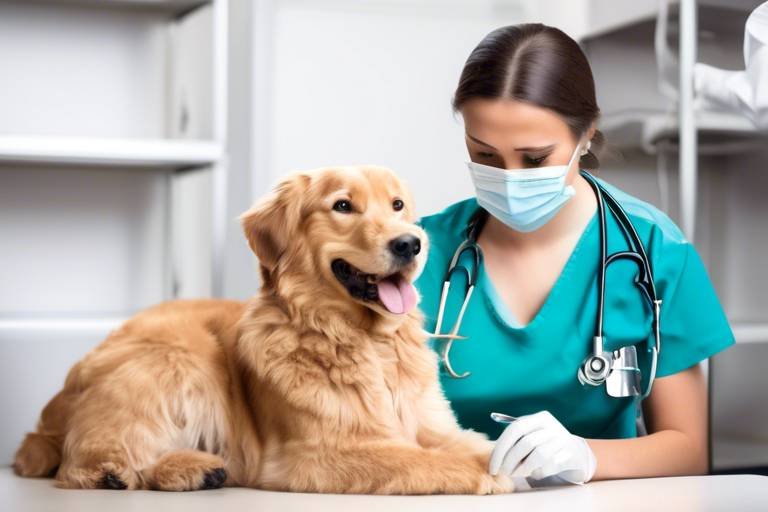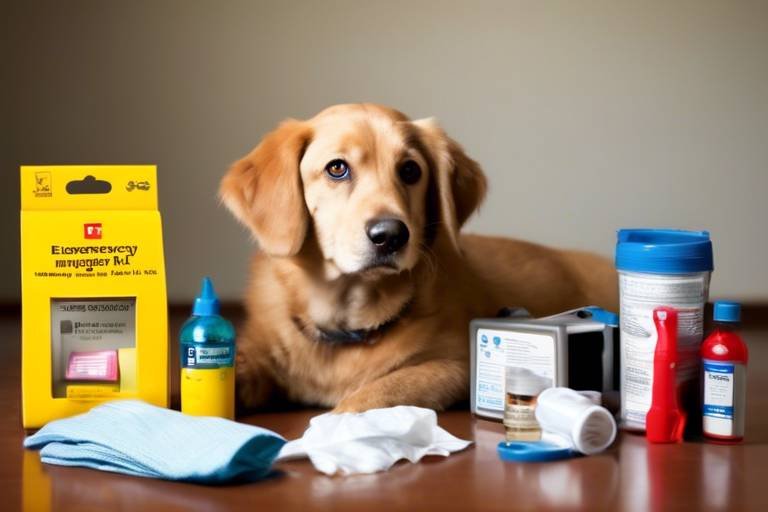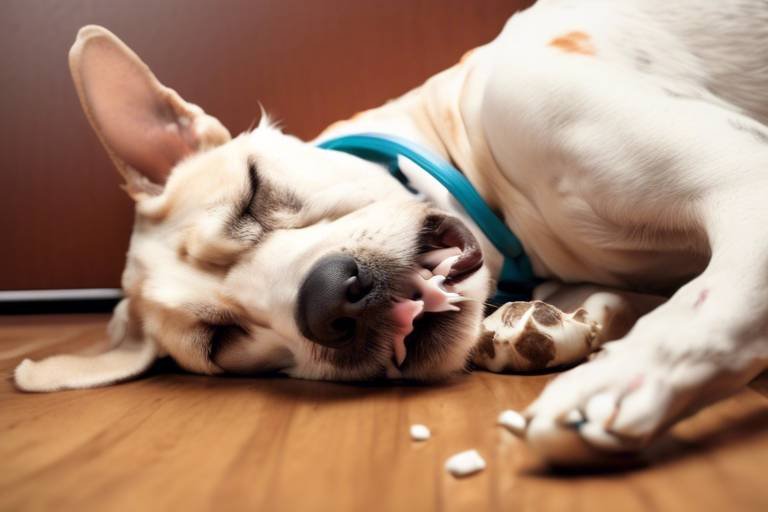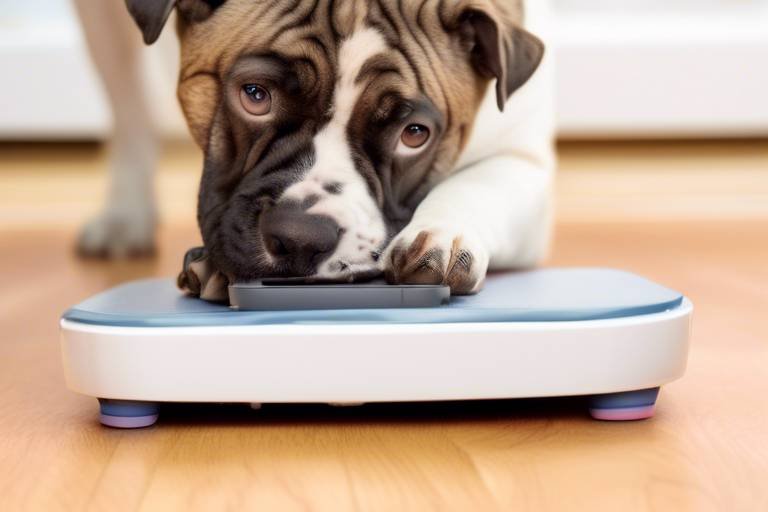How to Protect Your Pet from Household Poisons
As pet owners, we often think of our furry friends as part of the family. Just like any family member, their safety and well-being are of utmost importance. However, did you know that your home might be filled with hidden dangers that could pose serious risks to your pets? From cleaning supplies to certain plants and even some human foods, the potential for poisoning is all around us. In this article, we’ll dive into effective strategies and tips to safeguard your pets from common household poisons. By identifying these hazards and implementing preventative measures, you can create a safer environment for your beloved companions.
To protect your pet, the first step is to be aware of the common household items that can be toxic. Many cleaning supplies contain chemicals that are harmful if ingested. For example, bleach and ammonia are often found in household cleaners, and while they can make your home sparkle, they can also cause serious harm to your pets if they come into contact with them. Additionally, certain plants such as lilies, azaleas, and sago palms are extremely toxic to pets. Even some human foods, like chocolate, grapes, and onions, can be deadly. It's crucial to familiarize yourself with these items to ensure your pet's safety.
Now that you know what to look out for, let’s discuss some proactive steps you can take to minimize the risk of poisoning. One of the simplest yet most effective methods is proper storage of hazardous materials. Always keep cleaning supplies, medications, and any other toxic substances in cabinets that are out of reach of curious paws. Consider investing in childproof locks for these cabinets, which can serve dual purposes by keeping both children and pets safe. Moreover, using pet-safe alternatives for cleaning and other household products can significantly reduce the risk of accidental poisoning. Not only will this help keep your home clean, but it also ensures that your pets are not exposed to harmful chemicals.
Effective storage techniques for toxic substances are essential in keeping your pets safe. Here are some tips to help you:
- Always store cleaning supplies in high cabinets, ideally above the reach of your pets.
- Label all hazardous materials clearly to avoid confusion.
- Use airtight containers for storing any chemicals or medications.
By following these practices, you can significantly reduce the chance of your pet accidentally ingesting something harmful.
Childproofing your home isn’t just for kids; it can also be a great way to protect your pets. Many of the same measures that keep children safe will also prevent pets from accessing dangerous items. Consider installing gates to restrict access to certain areas of your home, and use drawer locks to keep them from getting into cabinets. This creates a safer environment for all family members, furry or not!
When it comes to cleaning products, it’s wise to investigate pet-safe alternatives. Many brands now offer eco-friendly and non-toxic options that are just as effective as traditional cleaners. Not only do these products help in reducing the risk of poisoning, but they are also better for the environment. Always check the labels for ingredients and look for certifications that indicate the product is safe for pets.
Even with the best precautions, accidents can happen. Therefore, it's crucial to familiarize yourself with the signs and symptoms of poisoning in pets. Some common indicators include:
- Vomiting or diarrhea
- Excessive drooling
- Difficulty breathing
- Seizures or tremors
- Unusual behavior or lethargy
Being able to recognize these symptoms quickly can be a lifesaver, enabling you to act fast and seek veterinary assistance when necessary.
If you suspect your pet has ingested a toxic substance, knowing how to respond can make all the difference. The first step is to remain calm. Panic can cloud your judgment, so take a deep breath and assess the situation. If you can identify the substance, keep the label handy as it will help the veterinarian determine the best course of action. In some cases, you may need to contact a poison control center for guidance. Always have your veterinarian's number saved in your phone for emergencies.
While waiting for professional help to arrive, there are some basic first aid measures you can perform at home:
- If your pet is conscious and not having seizures, try to keep them calm and still.
- Do not induce vomiting unless instructed by a veterinarian.
- Monitor their breathing and heart rate.
These steps can potentially save your pet’s life while you wait for further assistance.
Understanding when to seek veterinary help is crucial. If your pet shows any signs of poisoning or if you know they’ve ingested something toxic, don’t hesitate to contact your veterinarian immediately. The sooner your pet receives treatment, the better their chances of recovery. Be prepared to provide as much information as possible, including what your pet ingested, how long ago it happened, and any symptoms they are displaying.
Q: What should I do if I think my pet has eaten something toxic?
A: Remain calm and contact your veterinarian or a poison control center immediately. Provide them with details about the substance and your pet’s condition.
Q: Are there any household plants that are safe for pets?
A: Yes! Some pet-safe plants include spider plants, Boston ferns, and bamboo palms. Always research before bringing new plants into your home.
Q: How can I ensure my cleaning products are pet-safe?
A: Look for products labeled as non-toxic or pet-safe. You can also make your own cleaning solutions using ingredients like vinegar and baking soda.
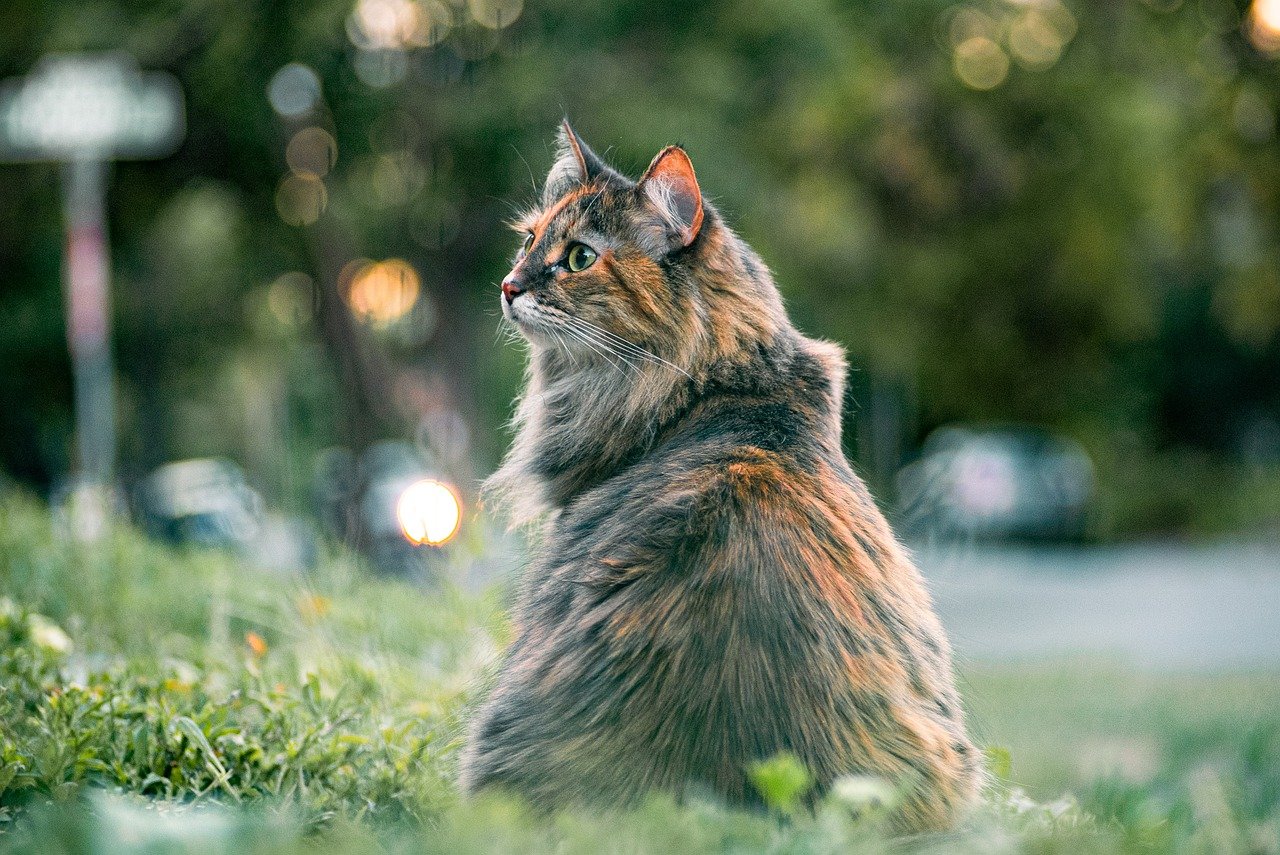
Identifying Common Household Poisons
When it comes to keeping our furry friends safe, knowledge is power. Understanding what items around the house can be hazardous is the first step in preventing accidental poisonings. Many common household items that we use daily can pose serious risks to our pets. For instance, cleaning supplies, human foods, and even certain plants can be toxic. It's essential to be aware of these dangers and take appropriate measures to protect our beloved companions.
Let's start with cleaning supplies. Many of us rely on various products to keep our homes spotless, but these can contain chemicals that are harmful to pets. Items like bleach, ammonia, and certain detergents can cause severe reactions if ingested or even if they come into contact with a pet's skin. Always check labels for warnings about pets and consider switching to pet-safe alternatives whenever possible.
Next up, let's talk about human foods. While sharing a snack with your pet might seem harmless, some foods are poisonous to them. Chocolate, grapes, onions, and garlic are just a few examples of foods that can lead to serious health issues. It's crucial to keep these items out of reach and educate yourself on what is safe for your pet to consume. Remember, what might be a tasty treat for you could be a deadly poison for your furry friend.
Additionally, certain household plants can be toxic to pets. For example, lilies, azaleas, and philodendrons can cause various health problems if ingested. If you're a plant lover, consider researching pet-safe plants or placing potentially harmful ones in areas that are inaccessible to your pets. It's a simple step that can save you from a lot of heartache.
To summarize, here are some common household poisons to keep an eye out for:
- Cleaning Supplies: Bleach, ammonia, detergents
- Human Foods: Chocolate, grapes, onions, garlic
- Plants: Lilies, azaleas, philodendrons
By being proactive and aware of these potential poisons, you can create a safer environment for your pets. Remember, it's not just about keeping your home clean; it's about ensuring that your pets are safe and healthy. So, take a moment to look around your home and identify any potential hazards. A little diligence can go a long way in protecting your furry family members!
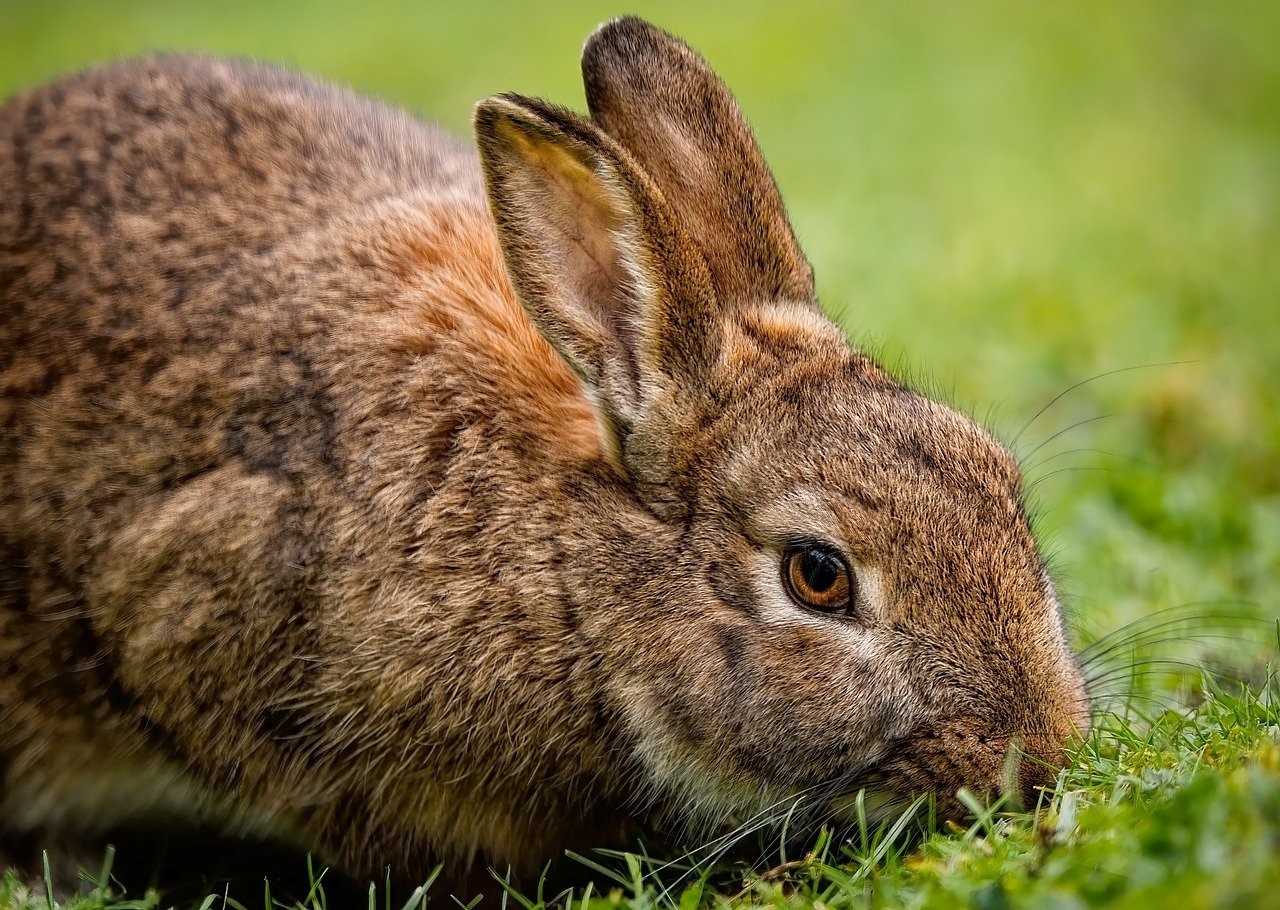
Preventative Measures to Take
When it comes to keeping our beloved pets safe, prevention is always better than cure. It’s essential to take a proactive approach in minimizing the risk of poisoning in your home. The first step is to conduct a thorough inventory of all household items that could potentially be harmful. This includes everything from cleaning supplies to certain plants and even some human foods. By being aware of what’s in your home, you can make informed decisions about how to protect your furry friends.
One of the most effective strategies is to store hazardous materials in a way that is completely out of reach of your pets. This means placing cleaning products, medications, and other toxic substances in high cabinets or locked storage areas. If you have a curious cat or a playful dog, consider using childproof locks on cabinets where these items are stored. This simple measure can prevent accidental ingestion, which is often the result of a pet's natural curiosity.
Additionally, using pet-safe products is a game-changer. There are numerous cleaning alternatives available that are formulated without harsh chemicals, making them a safer choice for homes with pets. Not only do these products help maintain a clean environment, but they also significantly reduce the risk of poisoning. Look for labels that specifically indicate the product is safe for pets, or consider making your own cleaning solutions using natural ingredients like vinegar and baking soda.
Effective storage practices go beyond just putting things away; it’s about creating a safe environment. For instance, always keep your cleaning supplies in their original containers, which are often designed to prevent accidental spills. It’s also wise to label any homemade or transferred substances clearly. This way, anyone in your household knows what’s inside and can avoid any potential mishaps.
Childproofing your home isn’t just for kids; it can also be incredibly beneficial for pets. Just like toddlers, pets can be curious and adventurous, often getting into places they shouldn’t. Installing safety latches on cabinets, using gates to block off certain areas, and keeping small items out of reach can help create a safer environment for your furry companions. Think of it as creating a fortress of safety that protects against the dangers lurking in your home.
Transitioning to pet-safe products can be one of the most impactful changes you make in your home. Not only do these products help to ensure your pet's safety, but they also contribute to a healthier living space for everyone. Many brands now offer a wide range of cleaning supplies, pest control options, and even air fresheners that are non-toxic and environmentally friendly. By choosing these alternatives, you’re not just safeguarding your pets; you’re also contributing to a cleaner planet.
In conclusion, by implementing these preventative measures, you can significantly reduce the risk of poisoning in your home. Remember, a little awareness and preparation can go a long way in ensuring the health and safety of your furry friends. After all, our pets rely on us to create a safe environment for them, and it’s our responsibility to rise to that challenge.
- What are some common household items that are toxic to pets? Common household items include cleaning supplies, certain plants like lilies and azaleas, human foods such as chocolate and grapes, and medications.
- How can I tell if my pet has ingested something toxic? Symptoms of poisoning can include vomiting, diarrhea, lethargy, seizures, and unusual behavior. If you notice any of these signs, it’s crucial to seek veterinary assistance immediately.
- What should I do if I suspect my pet has been poisoned? If you suspect poisoning, try to identify the substance and contact your veterinarian or a poison control center immediately for guidance.
Safe Storage Practices
When it comes to protecting our furry companions from the dangers lurking in our homes, are absolutely essential. Think of your home as a treasure chest filled with items that can either enrich your life or pose serious risks to your pets. Just as you would secure valuable treasures, you must also safeguard your household items that can be harmful to your pets. This means being proactive and mindful about where and how you store potentially toxic substances.
One of the first steps in ensuring a pet-safe environment is to keep hazardous materials, such as cleaning supplies, medications, and chemicals, in high, locked cabinets that are out of reach. Imagine your curious cat or dog as a little explorer, always eager to investigate new territories. If your cleaning supplies are stored under the sink, that’s like leaving a treasure map out for them! Instead, consider using cabinets that can be locked or secured with child-proof latches. This way, even the most adventurous pets won’t be able to get in.
Additionally, it’s crucial to clearly label all containers with hazardous materials. This not only helps you keep track of what’s inside but also serves as a visual reminder of the potential dangers. For example, a simple label reading “TOXIC – KEEP OUT OF REACH OF PETS” can make a significant difference in preventing accidents. Just like you wouldn’t leave a loaded gun lying around, you shouldn’t leave toxic substances unattended and unlabeled.
Another effective strategy is to store food items, especially human foods that can be toxic to pets, in sealed containers. Items like chocolate, grapes, and onions may be delicious for us but can be deadly for our furry friends. By keeping these foods in airtight containers and out of reach, you’re taking an important step in ensuring their safety. Think of it this way: if it’s not accessible, it’s not a temptation!
Also, consider the use of pet-safe alternatives for cleaning and household products. Many brands now offer eco-friendly and non-toxic options that can keep your home clean without putting your pets at risk. Making the switch not only protects your pets but also creates a healthier environment for everyone in the household. It’s like trading in a gas-guzzler for a sleek electric car—better for the planet and safer for your loved ones!
Lastly, don't forget about outdoor storage. If you have a garage or shed, ensure that any chemicals, fertilizers, or tools are kept locked away. Pets are curious creatures, and they might find a way to sneak into these areas. By implementing these safe storage practices, you are not just protecting your pets, but also fostering a safer home environment where everyone can thrive. Remember, a little extra caution goes a long way in preventing potential tragedies!
Childproofing for Pets
When you think about childproofing your home, it’s easy to focus solely on the little humans running around. However, our furry friends also need a safe haven free from potential hazards. is an essential step in ensuring that your home is a secure environment for all family members, whether they have two legs or four. Imagine your pet as a curious toddler, always exploring and getting into things they shouldn’t. Just as you would secure sharp objects and chemicals from a child’s reach, the same principle applies to your pets.
One of the first steps in this process is to identify potential hazards. Look around your home and consider what items could be dangerous. For example, cleaning supplies, medications, and even certain foods can pose significant risks. It’s crucial to keep these items locked away or out of reach. You might even consider using childproof locks on cabinets that store these substances, just like you would for a baby. This simple action can go a long way in preventing accidental ingestion.
Another important aspect of childproofing for pets involves creating barriers. Use baby gates to restrict access to certain areas of your home, particularly places where you store hazardous materials or where you might have plants that are toxic to pets. Think of it as setting up a safe zone for your furry friend. If your pet is particularly clever, you might need to get creative with how you secure these areas. For instance, consider using furniture to block off spaces or even investing in pet gates that are higher and sturdier.
Additionally, it’s essential to be mindful of toxic plants in your home. Many common houseplants can be harmful to pets if ingested. Before bringing a new plant into your home, do a quick search to ensure it’s pet-friendly. Here’s a quick reference table to help you identify some common plants that are toxic to pets:
| Plant Name | Type of Toxicity |
|---|---|
| Lilies | Kidney failure in cats |
| Aloe Vera | Vomiting, diarrhea |
| Philodendron | Oral irritation, swelling |
| Sago Palm | Liver failure |
Finally, consider the importance of proper training. Teaching your pet basic commands can help them understand boundaries. For instance, commands like “leave it” or “no” can be lifesavers if your pet is about to get into something dangerous. Consistent training not only builds a stronger bond between you and your pet, but it also creates a safer home environment.
In conclusion, childproofing for pets is all about creating a safe space where your furry companions can thrive without the risk of encountering hazardous items. By taking proactive measures such as securing dangerous substances, creating physical barriers, being mindful of toxic plants, and training your pets, you can ensure that your home is a sanctuary for all its inhabitants.
- What are the most common household items that are toxic to pets? Common items include cleaning supplies, certain plants, human foods like chocolate and grapes, and medications.
- How can I tell if my pet has ingested something toxic? Symptoms can include vomiting, diarrhea, lethargy, or unusual behavior. If you suspect poisoning, contact your veterinarian immediately.
- Are there pet-safe cleaning products? Yes, many brands offer cleaning products that are specifically formulated to be safe for pets. Look for labels that indicate they are pet-friendly.
Using Pet-Safe Products
When it comes to keeping our furry friends safe, one of the best strategies is to switch to pet-safe products. This doesn’t mean you have to compromise on cleanliness or effectiveness; rather, it’s about making informed choices that protect your pets from harmful chemicals. Many conventional cleaning products contain toxic ingredients that can pose serious health risks to pets if ingested or even inhaled. So, what can you do to ensure a safer environment?
First and foremost, always read labels. Look for products that are specifically labeled as non-toxic or pet-safe. These items are formulated to minimize risks, making them a better choice for homes with pets. For instance, many brands now offer eco-friendly cleaning solutions that utilize natural ingredients instead of harsh chemicals. You might be surprised to find that items like vinegar, baking soda, and lemon juice can be incredibly effective for cleaning without endangering your pet’s health.
Another important aspect is to consider alternative cleaning methods. For instance, steam cleaning can be a great way to sanitize surfaces without the use of chemicals. You can also opt for DIY cleaning solutions that are simple to make and safe for your pets. Here’s a quick recipe for a natural all-purpose cleaner:
Ingredients: - 1 cup of white vinegar - 1 cup of water - 10 drops of essential oil (like lavender or lemon, which are safe for pets) Instructions: 1. Mix all ingredients in a spray bottle. 2. Shake well before use. 3. Spray on surfaces and wipe clean with a cloth.
Additionally, it's crucial to be aware of the products you use around your home. For example, some air fresheners, candles, and even certain types of potpourri can be harmful to pets. Opt for natural alternatives like beeswax candles or essential oil diffusers that are safe for animals. If you’re unsure about a product, always do a quick search or consult your veterinarian.
Lastly, educate yourself about the ingredients in the products you use. Familiarize yourself with common toxic substances that can be found in everyday items. For instance, ingredients like phenols, chlorine, and formaldehyde can be detrimental to your pet's health. By choosing products without these harmful chemicals, you’re taking a proactive step in safeguarding your beloved companion.
In conclusion, using pet-safe products is not just a trend; it’s a necessary approach to maintaining a healthy home for both you and your pets. By opting for safer alternatives, educating yourself on harmful ingredients, and considering DIY solutions, you can create a clean and safe environment that keeps your furry friends happy and healthy.
- What are some common household products that are toxic to pets? Many cleaning supplies, certain plants, and human foods like chocolate, grapes, and onions can be harmful to pets.
- How can I tell if a product is pet-safe? Look for labels that say "non-toxic" or "pet-safe," and research ingredients to ensure they don't contain harmful substances.
- What should I do if my pet ingests a toxic substance? Contact your veterinarian or a poison control center immediately for guidance.
Recognizing Symptoms of Poisoning
When it comes to our beloved pets, being vigilant is key. Recognizing the symptoms of poisoning can be the difference between life and death. Just like humans, our furry friends can exhibit a range of signs when they've ingested something toxic. It’s crucial to be aware of these symptoms so you can act swiftly. Time is of the essence!
Common symptoms of poisoning in pets can vary based on the type of toxin ingested, but there are several telltale signs that should raise red flags. For instance, if you notice your pet acting unusually lethargic or disoriented, it might be time to investigate further. Other symptoms to watch for include:
- Vomiting: This is one of the most common signs of poisoning. If your pet is vomiting repeatedly, it could indicate they’ve ingested something harmful.
- Diarrhea: Similar to vomiting, diarrhea can signal that your pet's body is trying to expel a toxin.
- Excessive drooling: If your pet seems to be drooling more than usual, it could be a sign of nausea or a reaction to a toxic substance.
- Seizures: This is a serious symptom and requires immediate veterinary attention.
- Difficulty breathing: If your pet is struggling for breath or wheezing, it could indicate a severe reaction.
Additionally, keep an eye on your pet's behavior. If they seem restless, anxious, or are hiding more than usual, these could be subtle signs of distress. Changes in appetite or drinking habits can also be indicators of poisoning. For example, if your pet suddenly refuses to eat or drink, it might be worth investigating what they’ve been exposed to.
It’s also important to note that some symptoms may not appear immediately. In some cases, a pet may ingest a toxic substance and not show signs until hours or even days later. This delayed reaction can make it even more critical to monitor your pet closely after any potential exposure to poison.
To help you identify symptoms more effectively, here’s a quick reference table summarizing common signs of poisoning:
| Symptom | Description |
|---|---|
| Vomiting | Repeatedly throwing up, often accompanied by other symptoms. |
| Diarrhea | Loose or watery stools, sometimes with blood. |
| Excessive drooling | Unusual salivation that may indicate nausea or distress. |
| Seizures | Uncontrolled shaking or convulsions requiring immediate help. |
| Difficulty breathing | Labored breathing or wheezing, indicating a serious issue. |
In conclusion, being aware of these symptoms can empower you to take action quickly. Always remember, if you suspect your pet has been poisoned, don’t hesitate to contact your veterinarian immediately! They are your best resource and can provide the necessary treatment to help your furry friend recover.
Q: What should I do if I suspect my pet has ingested a poison?
A: Contact your veterinarian or a pet poison control hotline immediately for guidance. Time is crucial in these situations.
Q: Can I induce vomiting at home?
A: Inducing vomiting should only be done under the guidance of a veterinarian. Some substances can cause more harm if vomited back up.
Q: Are there any household items I should keep away from my pets?
A: Yes, common household items like certain plants, human foods (like chocolate), and cleaning supplies can be toxic. Always store these safely out of reach.
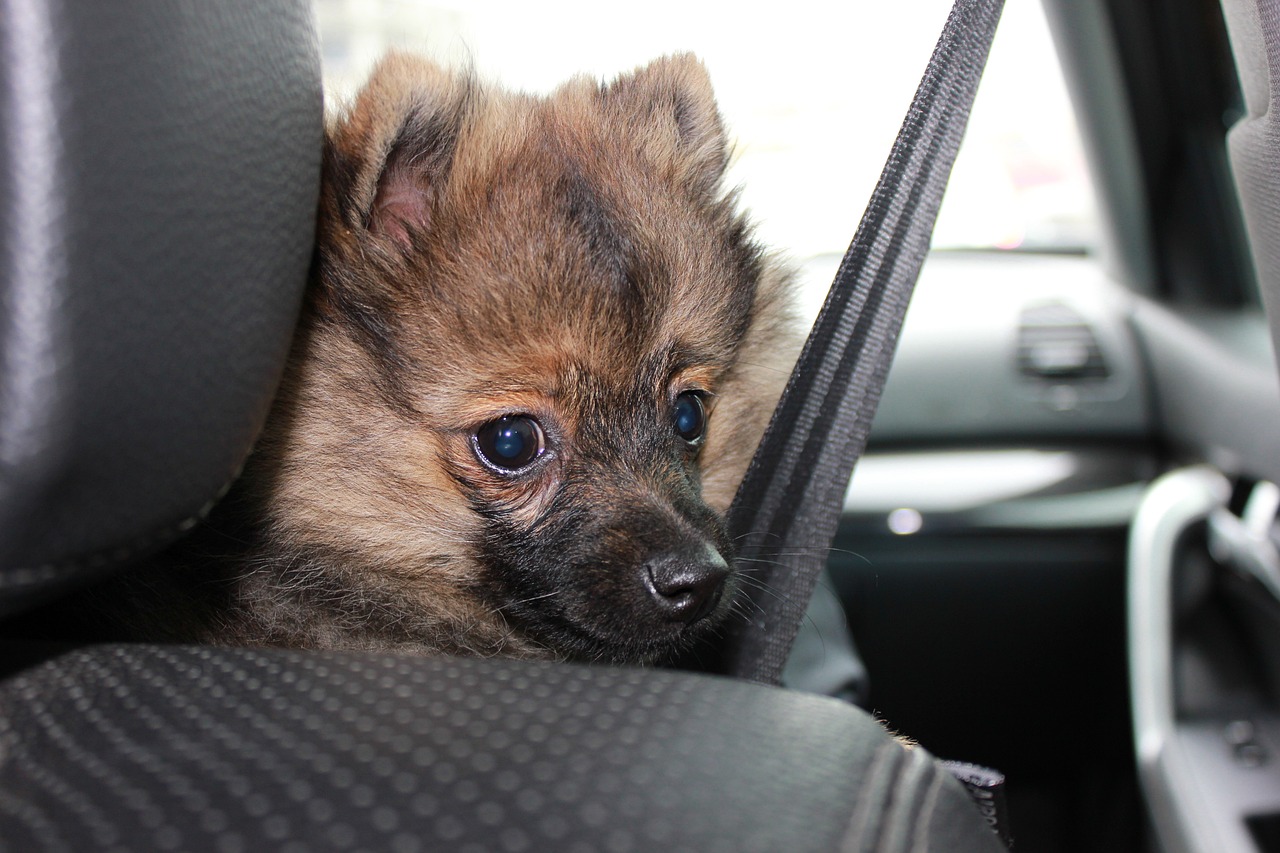
Emergency Response for Poisoning
When it comes to our beloved pets, nothing is more alarming than the thought of them ingesting something toxic. If you ever find yourself in this heart-stopping situation, it’s crucial to act swiftly and calmly. First and foremost, don’t panic. Your pet can sense your stress, and staying composed will help you think clearly. Start by identifying what your pet may have consumed. Was it a cleaning product, a human food item, or perhaps a plant? Knowing the source of the poison can significantly influence the treatment process.
In the event of suspected poisoning, the first step is to contact your veterinarian or a local poison control center immediately. They can provide critical guidance based on the specific substance involved. While you’re waiting for professional advice, you can take some preliminary actions to help your furry friend. If your pet is conscious and alert, you might be instructed to induce vomiting, but only if a professional recommends it. Never attempt this without guidance, as it can sometimes cause more harm than good.
Moreover, it’s essential to have a basic understanding of first aid for pets. Here are some key first aid tips you can follow:
- Keep your pet calm: Stress can exacerbate the situation.
- Identify the poison: Gather any packaging or labels to provide information to the vet.
- Do not give your pet food or water: This can interfere with potential treatments.
Once you’ve taken these initial steps, prepare for a visit to the veterinarian. Bring any information you have about the poison, including its name and the amount ingested. This will help the vet determine the best course of action. Remember, time is of the essence; the sooner you get your pet the help they need, the better their chances of recovery.
To further assist pet owners, here’s a quick reference table of common household poisons and their symptoms:
| Poison | Common Symptoms |
|---|---|
| Chocolate | Vomiting, diarrhea, rapid breathing, increased heart rate |
| Houseplants (e.g., lilies, azaleas) | Vomiting, lethargy, loss of appetite |
| Cleaning Supplies | Drooling, vomiting, difficulty breathing |
| Xylitol (found in sugar-free gum) | Vomiting, lethargy, seizures |
In conclusion, knowing how to respond in an emergency can be the difference between life and death for your pet. Always keep your veterinarian's contact information handy and educate yourself on the potential hazards lurking in your home. Remember, being prepared is the best way to ensure your pet's safety.
Q: What should I do if my pet ate something toxic?
A: Immediately contact your veterinarian or a pet poison control center for guidance.
Q: Can I induce vomiting at home?
A: Only induce vomiting if specifically instructed by a professional, as it can sometimes worsen the situation.
Q: How can I prevent poisoning in the first place?
A: Store hazardous materials out of reach, use pet-safe products, and educate yourself on toxic plants and foods.
First Aid Tips
When it comes to our furry companions, time is of the essence in an emergency. If you suspect your pet has ingested a toxic substance, staying calm and acting quickly can make all the difference. First, assess the situation: what did your pet ingest? If you can identify the poison, it will help you and your veterinarian determine the best course of action. Always keep the packaging or a sample of the substance handy, as this information can be crucial.
One of the first steps in providing first aid is to check your pet's vital signs. This includes their breathing rate, heart rate, and temperature. A normal temperature for dogs and cats ranges from 100.5°F to 102.5°F. If you notice any drastic changes, it could indicate a serious issue. If your pet is unconscious or having difficulty breathing, you may need to perform CPR. Just like with humans, the process involves checking for a pulse, ensuring the airway is clear, and administering breaths if necessary. Remember, however, that performing CPR on pets is quite different from humans, so it's wise to familiarize yourself with the technique in advance.
If your pet is conscious and alert, inducing vomiting may be an option, but this should only be done under the guidance of a veterinarian or poison control expert. They can provide specific instructions based on the type of poison and your pet's condition. In some cases, inducing vomiting can do more harm than good, especially with caustic substances or sharp objects. If advised to proceed, you can use hydrogen peroxide (3% solution) to induce vomiting, administering 1 teaspoon for every 5 pounds of body weight, but never exceed 3 tablespoons. Always consult a professional before attempting this.
After taking initial steps, it's crucial to contact your veterinarian or a poison control center immediately. They will guide you on the next steps and may ask you to bring your pet in for further treatment. Be prepared to provide them with as much information as possible, including your pet's weight, age, and any symptoms they are exhibiting. If your pet has collapsed or is having seizures, do not wait; get them to a vet immediately.
In addition to these immediate actions, it’s beneficial to have a pet first aid kit readily available at home. This kit can include items such as:
- Gauze and bandages for cuts
- Antiseptic wipes
- Hydrogen peroxide for inducing vomiting
- Thermometer
- Emergency contact numbers for your vet and poison control
Keeping this kit stocked and knowing how to use the items inside can save precious time during a crisis. Remember, while these first aid tips are essential, they are not a substitute for professional veterinary care. Always prioritize getting your pet to a veterinarian as soon as possible.
Q: What should I do if my pet has ingested a toxic plant?
A: First, try to identify the plant and determine if it is toxic. Contact your veterinarian or a poison control center immediately for specific advice.
Q: Can I give my pet human medications in case of poisoning?
A: Never give your pet human medications without consulting a veterinarian. Many human medications can be toxic to pets, so always seek professional advice first.
Q: How can I prevent my pet from getting into poisons in the first place?
A: The best prevention is to be vigilant. Store all hazardous substances out of reach, use pet-safe products, and educate yourself on common household poisons.
When to Seek Veterinary Help
When it comes to our beloved pets, their health and safety are always our top priorities. If you suspect that your furry friend has ingested a toxic substance, knowing when to seek veterinary help can be a game-changer. It's often said that "better safe than sorry," and this couldn't be truer when it comes to potential poisoning. If your pet shows any signs of distress or unusual behavior, it’s crucial to act quickly. But what exactly should you be looking for?
First and foremost, recognizing the symptoms of poisoning is key. Some common signs include:
- Vomiting or diarrhea
- Excessive drooling
- Loss of appetite
- Unusual lethargy or weakness
- Tremors or seizures
- Difficulty breathing
If you notice any of these symptoms, don't hesitate to consult with a veterinarian. Timing can be critical; the sooner you seek help, the better the chances of a positive outcome. In some cases, symptoms may not appear immediately, so if you know your pet has ingested something potentially harmful, it's wise to reach out for advice even if they seem fine at the moment.
Another important factor to consider is the type of substance ingested. Some household items, like certain plants or human foods, may require immediate veterinary intervention, while others might be less urgent. For instance, if your pet has consumed chocolate, grapes, or xylitol (a common sugar substitute), these are known to be particularly dangerous. In such cases, you should contact your veterinarian or a poison control center right away.
Additionally, having a plan in place can ease the stress of an emergency. Keep the contact information of your veterinarian and local animal poison control center readily accessible. This way, you can act swiftly without wasting precious time searching for numbers when every second counts. It's also helpful to have your pet's medical records on hand, as this information can assist the vet in determining the best course of action.
In summary, being vigilant and proactive can make all the difference in safeguarding your pet's health. By recognizing the symptoms of poisoning and knowing when to seek veterinary help, you can ensure that your cherished companion receives the care they need. Always remember, if in doubt, it's better to err on the side of caution—your pet's life may depend on it!
Q: What should I do if I suspect my pet has been poisoned?
A: If you suspect your pet has ingested something toxic, contact your veterinarian or a poison control center immediately. Time is of the essence!
Q: Are all household plants safe for pets?
A: No, many common household plants can be toxic to pets. It's essential to research any plants you have and ensure they are safe.
Q: How can I prevent my pet from accessing harmful substances?
A: Store hazardous materials securely, use childproof locks, and choose pet-safe cleaning products to minimize risks.
Frequently Asked Questions
- What are some common household items that are toxic to pets?
Many everyday items can pose a poisoning risk to our furry friends. Common household poisons include certain cleaning supplies, human foods like chocolate and grapes, and even some popular houseplants such as lilies and philodendrons. Always be cautious about what you bring into your home!
- How can I prevent my pet from getting poisoned?
Prevention is key! Start by storing hazardous materials in high cabinets or locked areas, out of your pet's reach. Use pet-safe alternatives for cleaning products and ensure that all medications and toxic substances are clearly labeled and stored securely. Think of it like childproofing your home, but for your pets!
- What should I do if I suspect my pet has ingested something toxic?
If you suspect poisoning, act quickly! Contact your veterinarian or a local poison control center immediately. They can provide guidance on the next steps and whether your pet needs to be seen right away. Remember, time is of the essence!
- What are the signs of poisoning in pets?
Keep an eye out for symptoms such as vomiting, diarrhea, lethargy, or seizures. If your pet is acting strangely or shows any unusual behavior, don’t hesitate to seek veterinary help. Recognizing these signs early can make a huge difference!
- Can I perform first aid on my pet if they are poisoned?
Yes, there are some basic first aid steps you can take, such as removing your pet from the source of poison and trying to keep them calm. However, it's crucial to get professional help as soon as possible. Think of yourself as their first responder until the experts arrive!
- How do I prepare for a vet visit if my pet has been poisoned?
Gather as much information as you can, including what your pet ingested, when it happened, and any symptoms they've shown. This information will help the vet provide the best care possible. It’s like giving them a head start in treating your furry friend!

